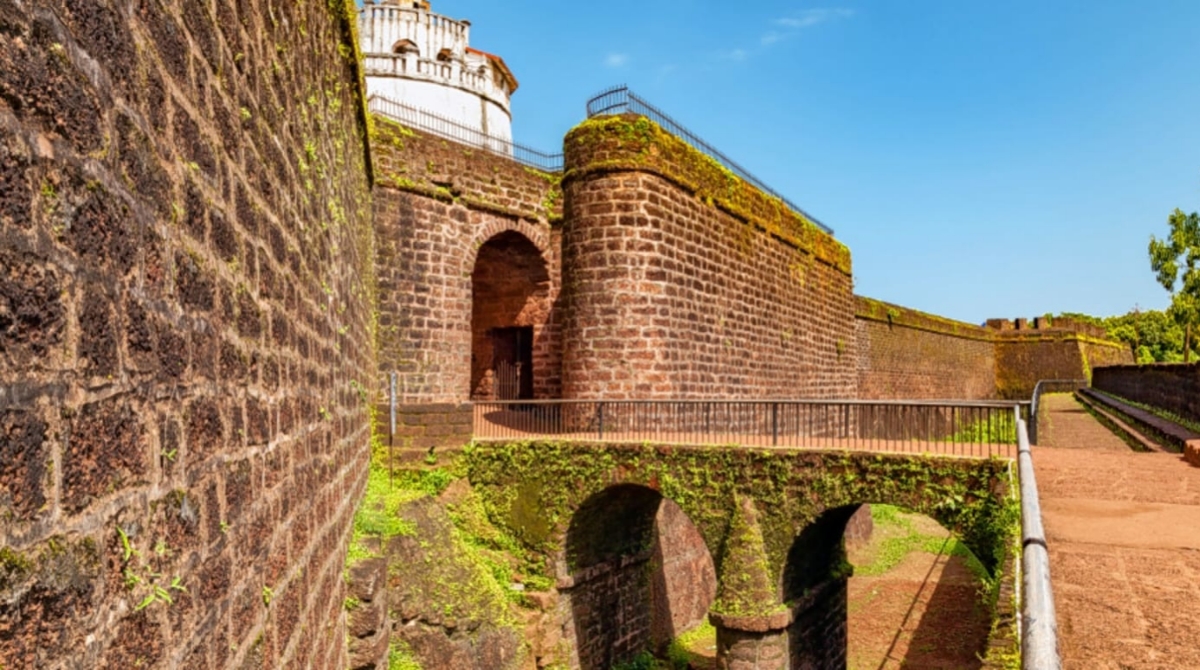Located in Canacona, Cabo De Rama Fort is a rich slice of Indian heritage, nestled between two famous seashores in South Goa — Cavelossim and Agonda.
Deriving its identity from the Hindu Epic the Ramayana, this historical fortress far predates the Portuguese rule in Goa, making it one of the oldest forts in Goa.
Though time and the factors have weathered this proud structure, it still stands today, guarding the mouth of the Sal River and commanding panoramic views of the ocean and the surrounding countryside.

This citadel gives a proper vantage factor to watch the sundown over the Arabian Sea and this is an accurate time to visit. It is additionally recommended to know not go throughout the monsoon season as there is a little refuge to be had from a surprising shower of rain.
History of Cabo de Rama
This ancient fort has been standing on the bluff overlooking the Cape for centuries. It changed hands many times during its history and was controlled sometimes by the Hindu rulers and sometimes by the Muslim rulers. The Portuguese wrested it from the control of the Raja of Soonda in 1763 and remained in control of it for the rest of the colonial rule of Goa.
When the fort was no longer useful as a military bastion, it was converted into a prison in 1935 and continued to be used in this capacity until 1955.

Architecture of Cabo de Rama
The fort covers an impress 180,000sq.m. and is built, like most of the other ancient structures of Goa out of laterite rock.
When the Portuguese took over the fort, they constructed military barracks, command posts and officers’ quarters. They also equipped it with 21 canons and the embrasures to hold the same.
As was their habit they constructed a church within the walls of the fort. This church, dedicated to St. Anthony, is still in use today. Its cleanly white washed structure makes a vivid contrast with the blackened walls of the fort.
The citadel now lies in ruins and only one of the walls is completely preserved. However, the main entrance to the fort has been completely reconstructed and lends an imposing air to the monument. Although this fort cannot be said to be in good repair, it is nevertheless still an impressive and historically significant monument.
Cabo de Rama Today
Today only the Church is still in regular use and consequently is the best maintained part of the fort. The buildings that were used as a prison are also reasonably habitable and are used as a government outpost, occasionally housing scientists and researchers from the National Institute of Oceanography.
It is notable, however, that there are still a couple of ancient canons which were left behind when the Portuguese abandoned the place, and have been left there ever since. One can walk around the fort walls, taking in the view of the surrounding countryside.
From the Western wall, the full panorama of the Arabian Sea lies beneath. There is also a narrow, and steep pathway that can be used to travel from the fort down to the beach below.
Legend and Lore
The fortress receives its title from Lord Rama, hero of the epic Ramayana. It is stated that he and his cherished spouse Sita took refuge right here at some point of the time they had been exiled from Ayodhya. Hence the castle and the cape have been named for him. Although no longer as astounding as some of the different forts, these who choose to do their sight-seeing with a sure quantity of solitude would in all likelihood admire the peace and quiet that prevails here.
Although there are a couple of smooth drink providers at the fortress entrance, the relaxation of your go to can be handed barring any premature intrusions with the aid of humanity. A little slice out of time, it is effortless to think about it restored to its former glory, defending the cape with the roar of artillery and blasts of canon fire.


